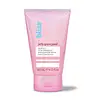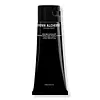What's inside
What's inside
 Key Ingredients
Key Ingredients

 Benefits
Benefits

 Concerns
Concerns

 Ingredients Side-by-side
Ingredients Side-by-side

Water
Skin ConditioningGlycerin
HumectantDiglycerin
HumectantCarbomer
Emulsion StabilisingCetrimonium Chloride
AntimicrobialGlycereth-26
HumectantPanthenol
Skin ConditioningNiacinamide
SmoothingPanthenyl Triacetate
Cocos Nucifera Fruit Extract
EmollientMalus Domestica Fruit Cell Culture Extract
Skin ConditioningPapain
Skin ConditioningBromelain
Skin ConditioningSodium Hyaluronate
HumectantLecithin
EmollientLactobacillus
Skin ConditioningLactobacillus Ferment
Skin ConditioningXanthan Gum
EmulsifyingSaccharide Isomerate
HumectantHydroxypropylcellulose
EmulsifyingCellulose
AbsorbentMaltodextrin
AbsorbentSodium Citrate
BufferingPhenoxyethanol
PreservativeEthylhexylglycerin
Skin ConditioningCitric Acid
BufferingLavandula Angustifolia Oil
MaskingSalvia Officinalis Oil
MaskingPelargonium Graveolens Flower Oil
MaskingLinalool
PerfumingCI 16035
Cosmetic ColorantWater, Glycerin, Diglycerin, Carbomer, Cetrimonium Chloride, Glycereth-26, Panthenol, Niacinamide, Panthenyl Triacetate, Cocos Nucifera Fruit Extract, Malus Domestica Fruit Cell Culture Extract, Papain, Bromelain, Sodium Hyaluronate, Lecithin, Lactobacillus, Lactobacillus Ferment, Xanthan Gum, Saccharide Isomerate, Hydroxypropylcellulose, Cellulose, Maltodextrin, Sodium Citrate, Phenoxyethanol, Ethylhexylglycerin, Citric Acid, Lavandula Angustifolia Oil, Salvia Officinalis Oil, Pelargonium Graveolens Flower Oil, Linalool, CI 16035
Water
Skin ConditioningGlycerin
HumectantPrunus Amygdalus Dulcis Oil
Skin ConditioningMaltodextrin
AbsorbentCalcium Pantothenate
Xanthan Gum
EmulsifyingPotassium Lactate
BufferingUrea
BufferingCaprylyl Glycol
EmollientSerine
MaskingPapain
Skin ConditioningCarica Papaya Fruit Extract
Skin ConditioningSantalum Acuminatum Fruit Extract
AntioxidantFicus Carica Fruit Extract
HumectantLavandula Angustifolia Oil
MaskingCitrus Nobilis Peel Oil
MaskingSphingomonas Ferment Extract
Skin ConditioningVanillin
MaskingMagnesium Chloride
Sodium Citrate
BufferingEthylhexylglycerin
Skin ConditioningBenzyl Alcohol
PerfumingDehydroacetic Acid
PreservativeLinalool
PerfumingLimonene
PerfumingWater, Glycerin, Prunus Amygdalus Dulcis Oil, Maltodextrin, Calcium Pantothenate, Xanthan Gum, Potassium Lactate, Urea, Caprylyl Glycol, Serine, Papain, Carica Papaya Fruit Extract, Santalum Acuminatum Fruit Extract, Ficus Carica Fruit Extract, Lavandula Angustifolia Oil, Citrus Nobilis Peel Oil, Sphingomonas Ferment Extract, Vanillin, Magnesium Chloride, Sodium Citrate, Ethylhexylglycerin, Benzyl Alcohol, Dehydroacetic Acid, Linalool, Limonene
 Reviews
Reviews

Ingredients Explained
These ingredients are found in both products.
Ingredients higher up in an ingredient list are typically present in a larger amount.
Ethylhexylglycerin (we can't pronounce this either) is commonly used as a preservative and skin softener. It is derived from glyceryl.
You might see Ethylhexylglycerin often paired with other preservatives such as phenoxyethanol. Ethylhexylglycerin has been found to increase the effectiveness of these other preservatives.
Glycerin is already naturally found in your skin. It helps moisturize and protect your skin.
A study from 2016 found glycerin to be more effective as a humectant than AHAs and hyaluronic acid.
As a humectant, it helps the skin stay hydrated by pulling moisture to your skin. The low molecular weight of glycerin allows it to pull moisture into the deeper layers of your skin.
Hydrated skin improves your skin barrier; Your skin barrier helps protect against irritants and bacteria.
Glycerin has also been found to have antimicrobial and antiviral properties. Due to these properties, glycerin is often used in wound and burn treatments.
In cosmetics, glycerin is usually derived from plants such as soybean or palm. However, it can also be sourced from animals, such as tallow or animal fat.
This ingredient is organic, colorless, odorless, and non-toxic.
Glycerin is the name for this ingredient in American English. British English uses Glycerol/Glycerine.
Learn more about GlycerinLavandula Angustifolia Oil is more commonly known as lavender essential oil. It is considered a fragrancing ingredient.
Lavender imparts a famous scent. While the smell is lovely, this ingredient and may sensitize skin in topical products. This is because about 85% of the oil is made up of linalool and linalyl acetate.
When exposed to air, these two compounds become strong allergens. This ingredient exhibits cytotoxicity at low concentrations; amounts of 0.25% have been shown to damage skin cells.
A study from Japan found this ingredient caused lavender sensitivity after widespread exposure.
Lavender essential oil has some antimicrobial, antibacterial, and anti-inflammatory properties. However, the cons of this ingredient may outweight the pros.
More research is needed to confirm lavender essential oil's effects when used in aromatherapy.
Lavandula Angustifolia is known as the English Lavender and famous for creating purple fields in Provence, France.
Learn more about Lavandula Angustifolia OilLinalool is a fragrance and helps add scent to products. It's derived from common plants such as cinnamon, mint, citrus, and lavender.
Like Limonene, this ingredient oxidizes when exposed to air. Oxidized linalool can cause allergies and skin sensitivity.
This ingredient has a scent that is floral, spicy tropical, and citrus-like.
Learn more about LinaloolMaltodextrin is a polysaccharide. It is derived from starch such as rice, corn, wheat, or potato starch.
In food, Maltodextrin is used to improve the texture and thicken a product. Due to its structure, it can help create a gel texture. As an emulsion stabilizer, it helps keep the ingredients in a product together.
As a polysaccharide, Maltodextrin has moisturizing properties. Polysaccharides are a type of carbohydrate. The top layer of skin uses polysaccharides to retain water, keeping the skin hydrated.
Maltodextrin is water soluble and has a sweet taste.
Learn more about MaltodextrinPapain is an enzyme found naturally in the papaya plant's leaves, fruit, and roots. It has antimicrobial, soothing, and wound healing properties.
Glycine and Vitamin A are naturally found in papain.
While papain is often touted as skin-lightening, further studies are needed to prove this. However, papain has been shown to help soothe acne-inflammation.
Papain belongs to a class of enzymes called proteolytic enzymes. These enzymes break down peptides and amino acids.
Some studies found papain to be a potential skin sensitizer and allergen. Those with latex allergies might also be allergic to papaya.
Learn more about PapainSodium Citrate is the sodium salts of citric acid. In skincare, it is used to alter pH levels and acts as a preservative.
Its main functions are to maintain the pH of a product and neutralize metal ions.
The acidity of our skin is maintained by our glands and skin biome; normal pH level of skin is slightly acidic (~4.75-5.5).
Being slightly acidic allows our skin to create an "acid mantle". This acid mantle is a thin barrier that protects our skin from bacteria and contaminants.
Learn more about Sodium CitrateWater. It's the most common cosmetic ingredient of all. You'll usually see it at the top of ingredient lists, meaning that it makes up the largest part of the product.
So why is it so popular? Water most often acts as a solvent - this means that it helps dissolve other ingredients into the formulation.
You'll also recognize water as that liquid we all need to stay alive. If you see this, drink a glass of water. Stay hydrated!
Learn more about WaterXanthan gum is used as a stabilizer and thickener within cosmetic products. It helps give products a sticky, thick feeling - preventing them from being too runny.
On the technical side of things, xanthan gum is a polysaccharide - a combination consisting of multiple sugar molecules bonded together.
Xanthan gum is a pretty common and great ingredient. It is a natural, non-toxic, non-irritating ingredient that is also commonly used in food products.
Learn more about Xanthan Gum